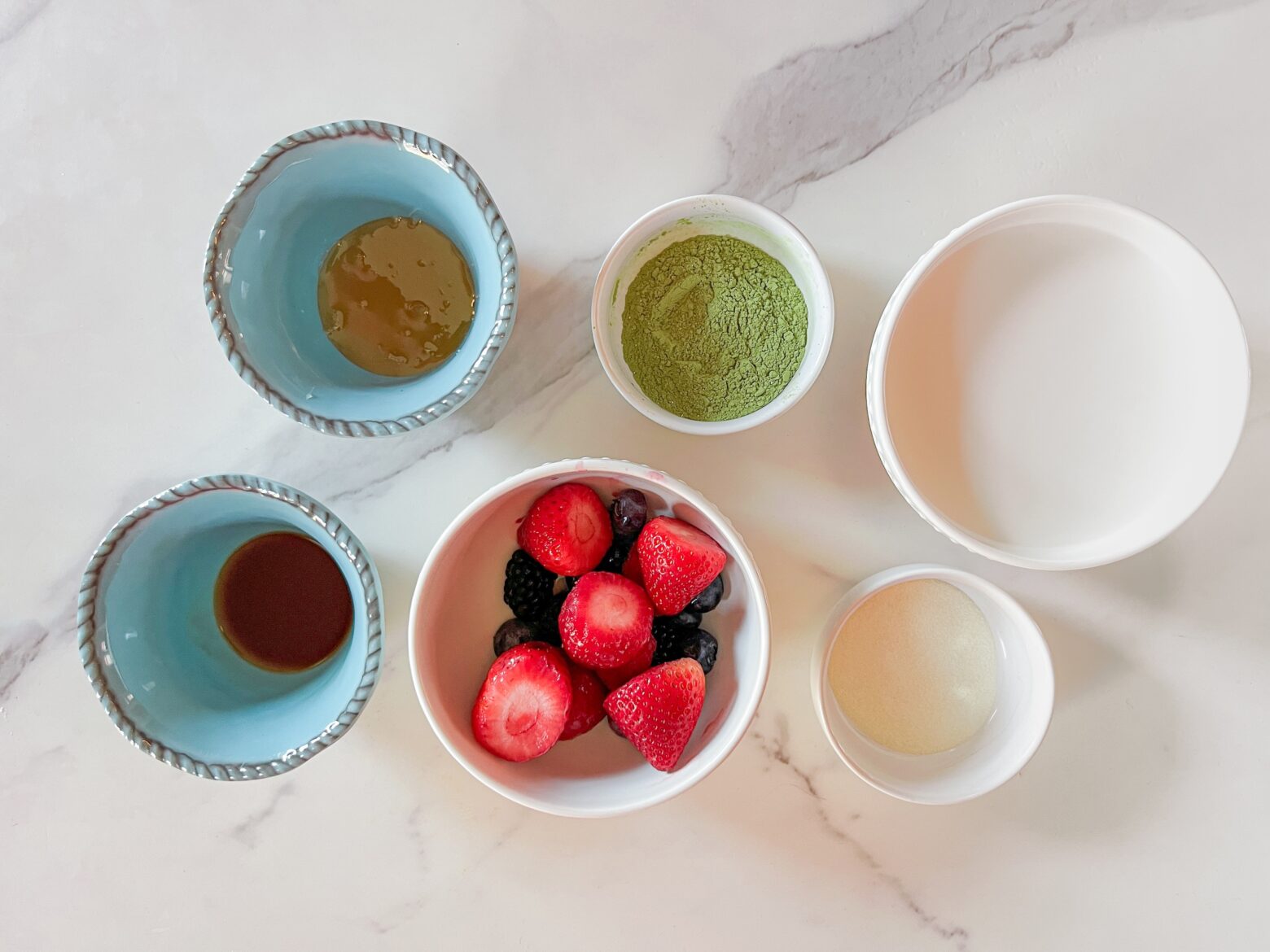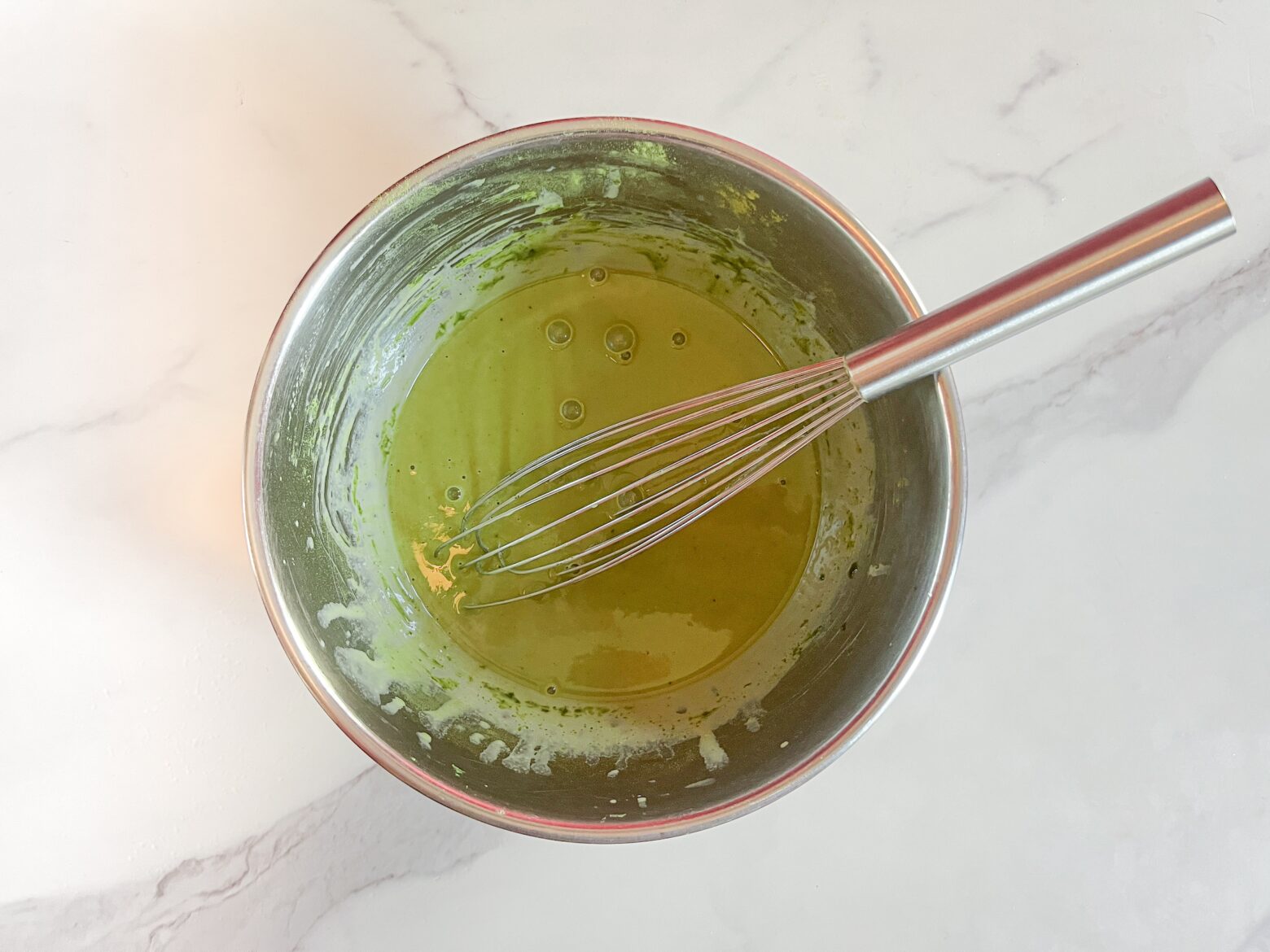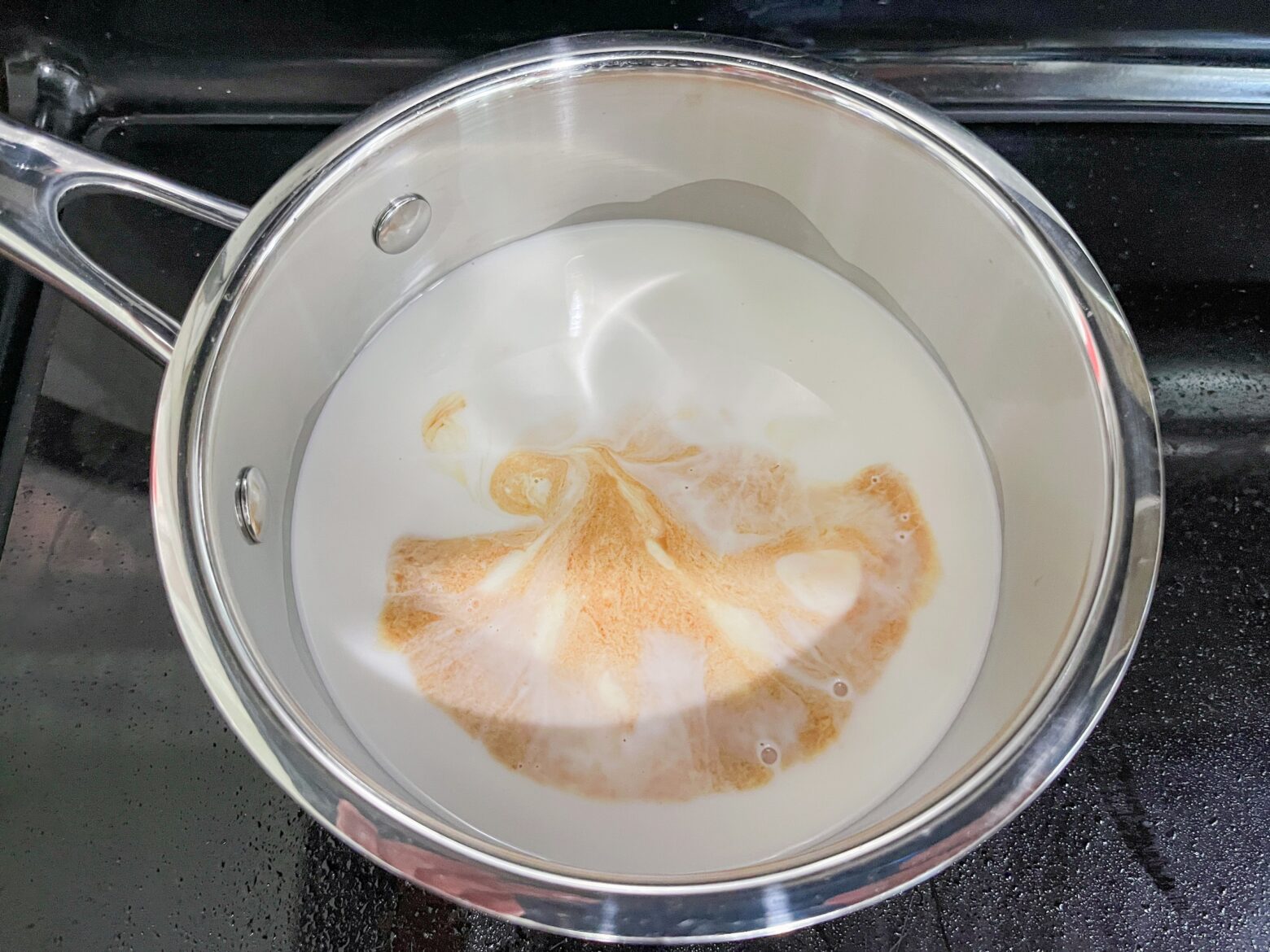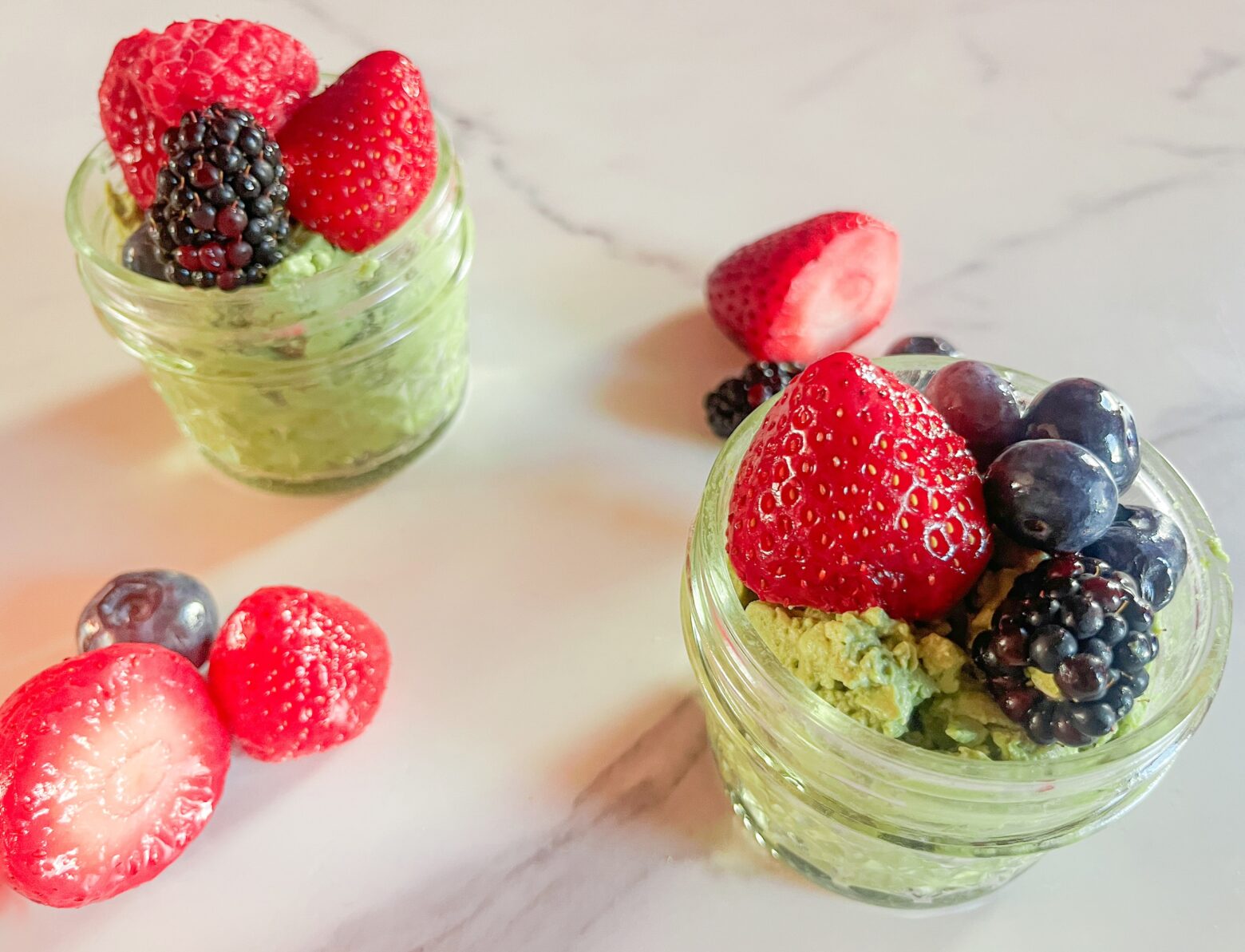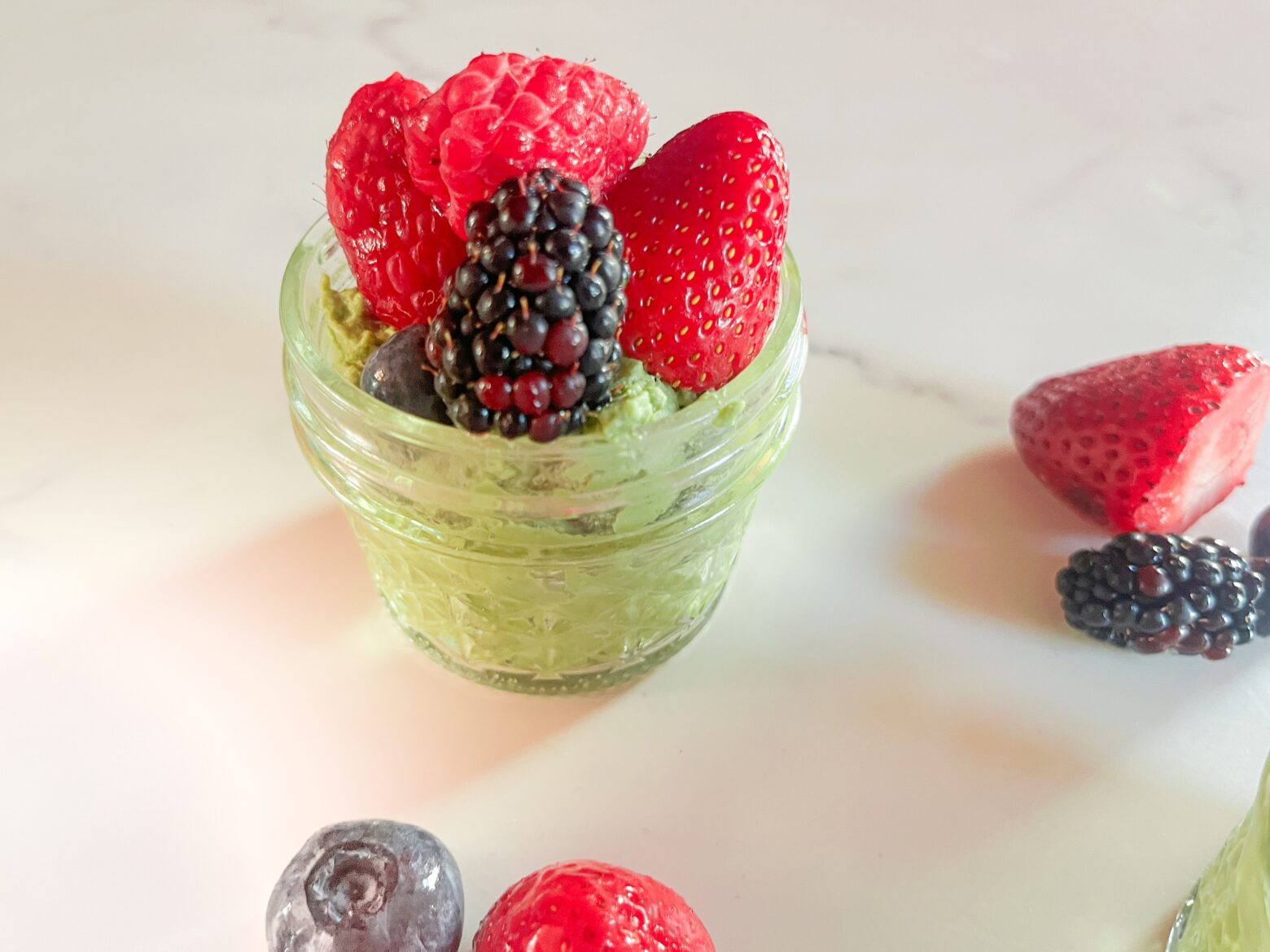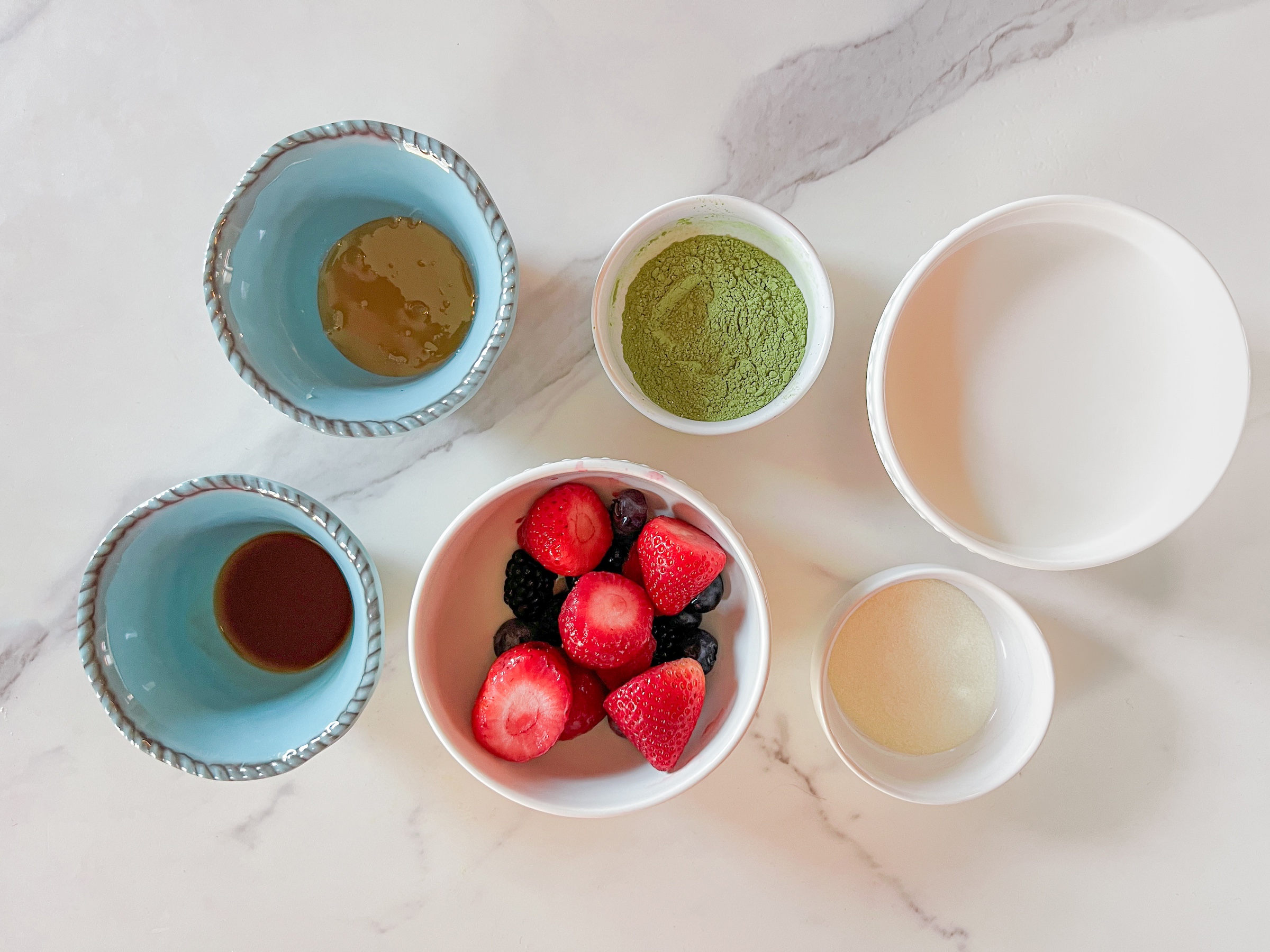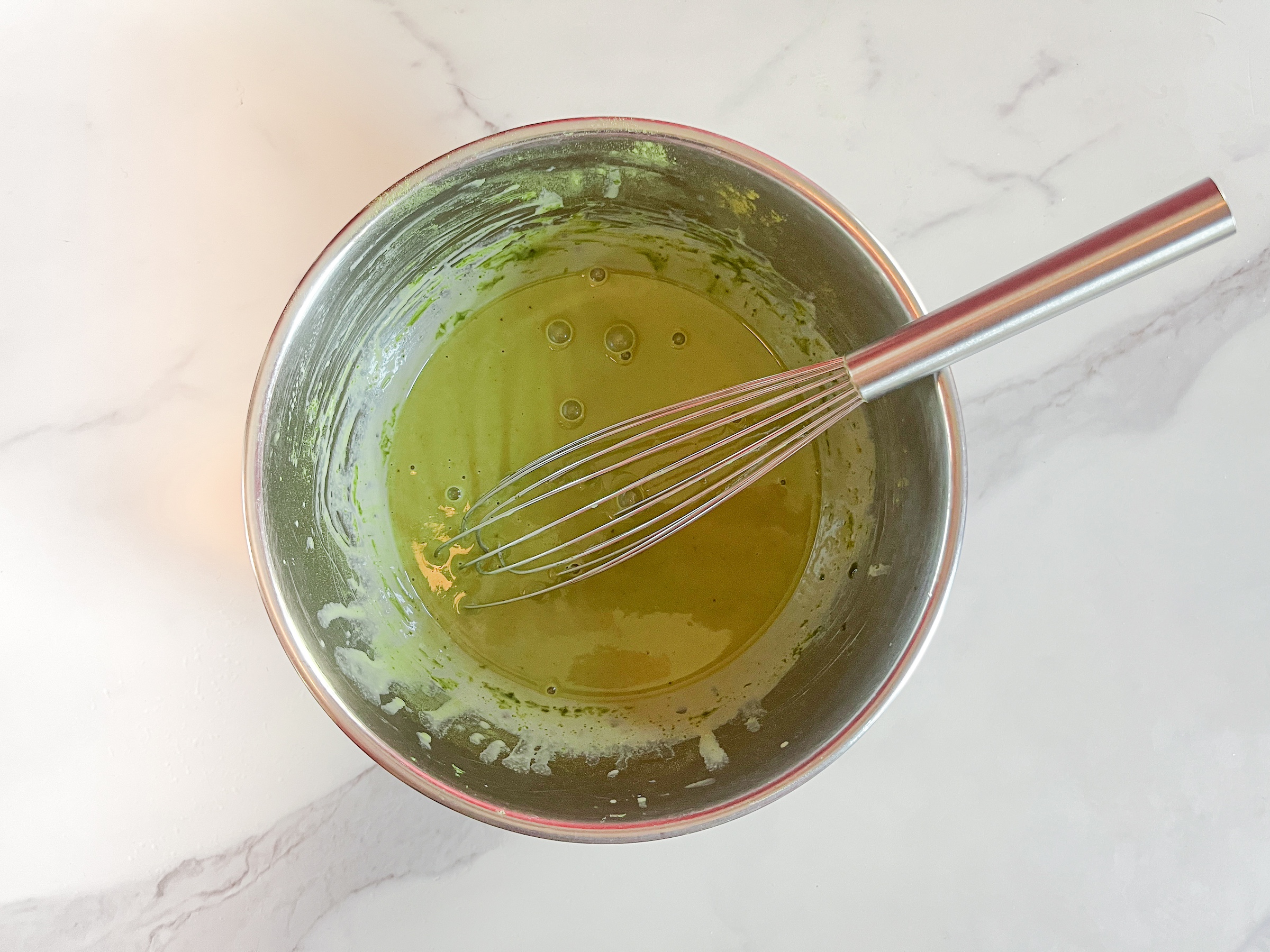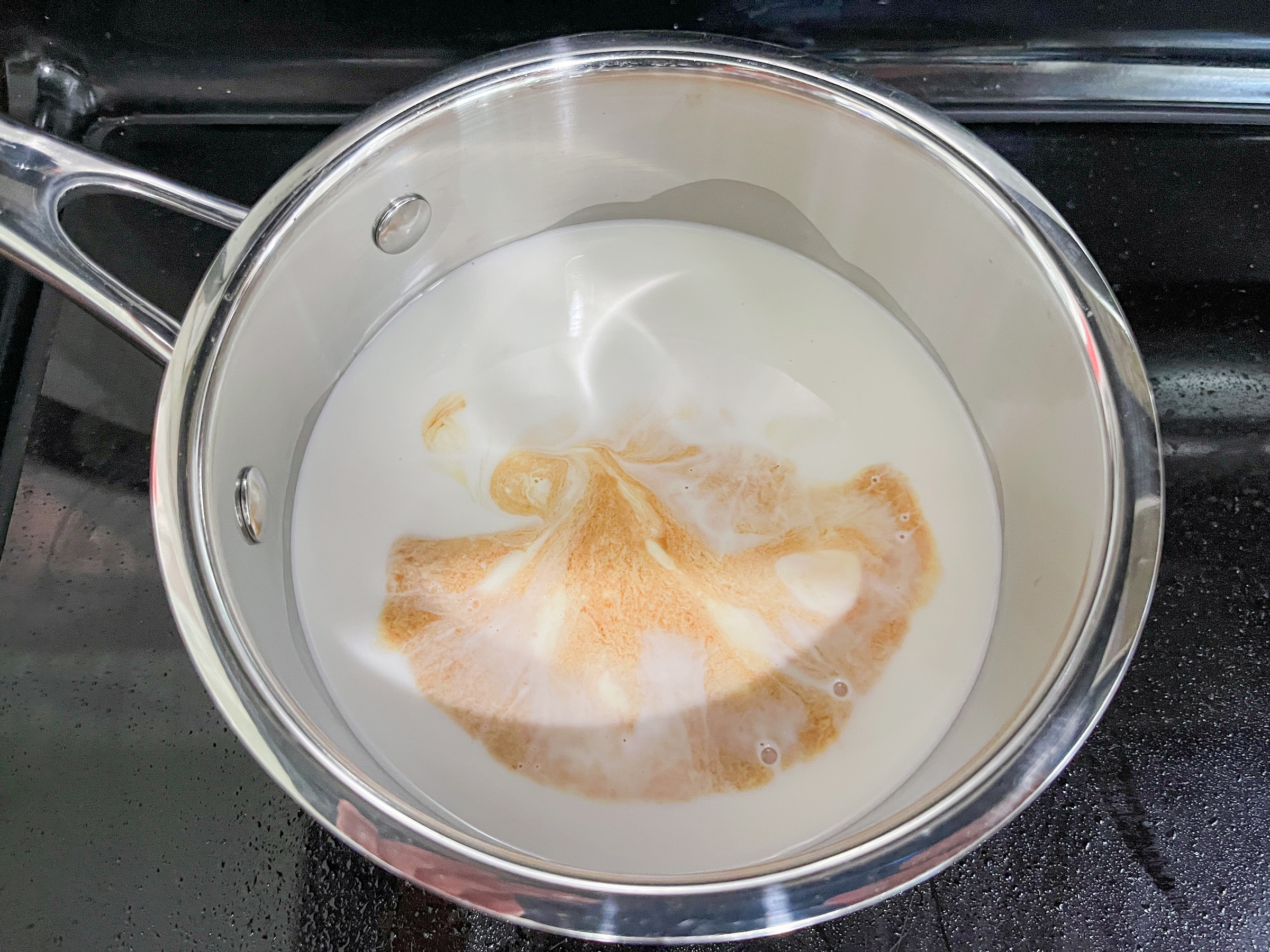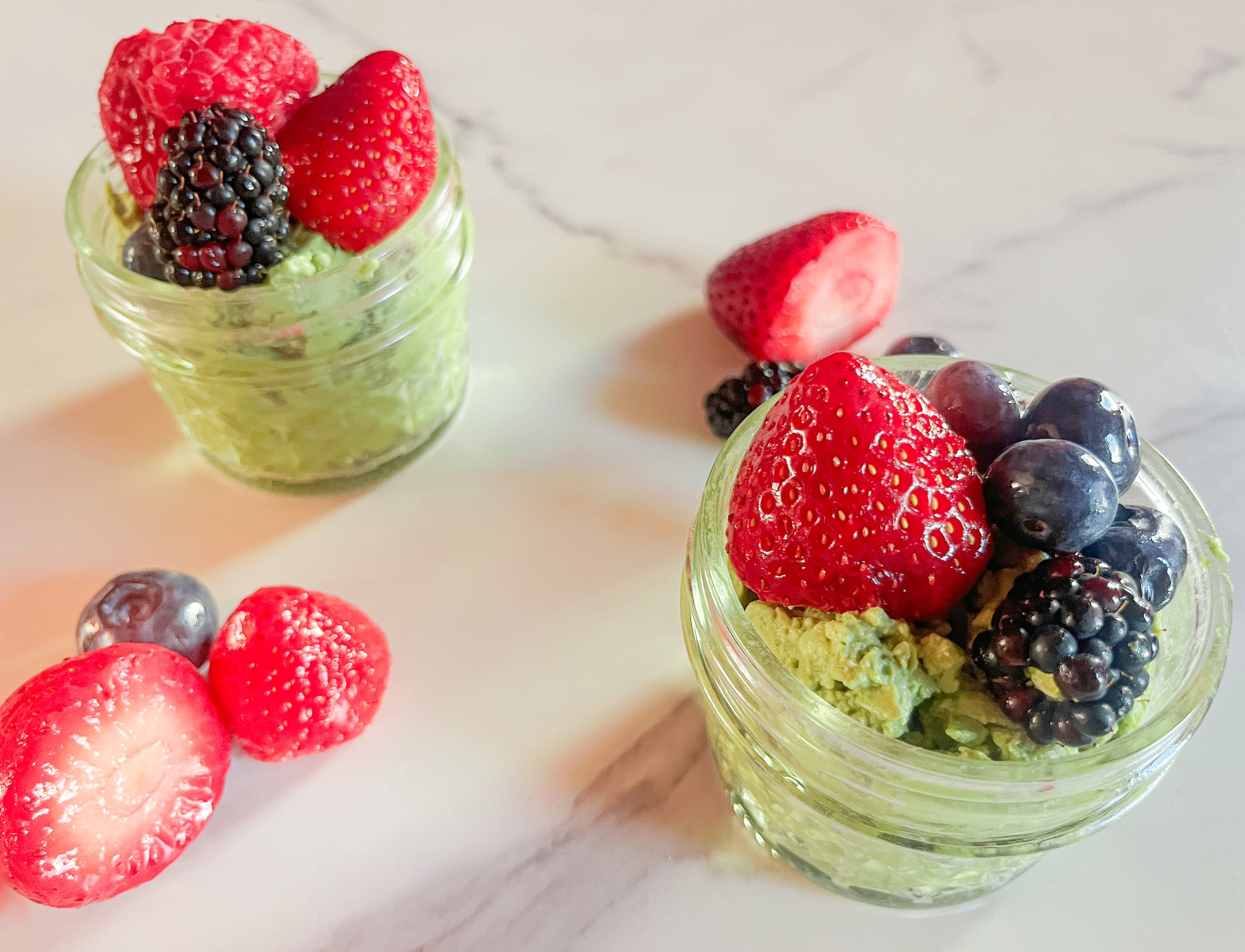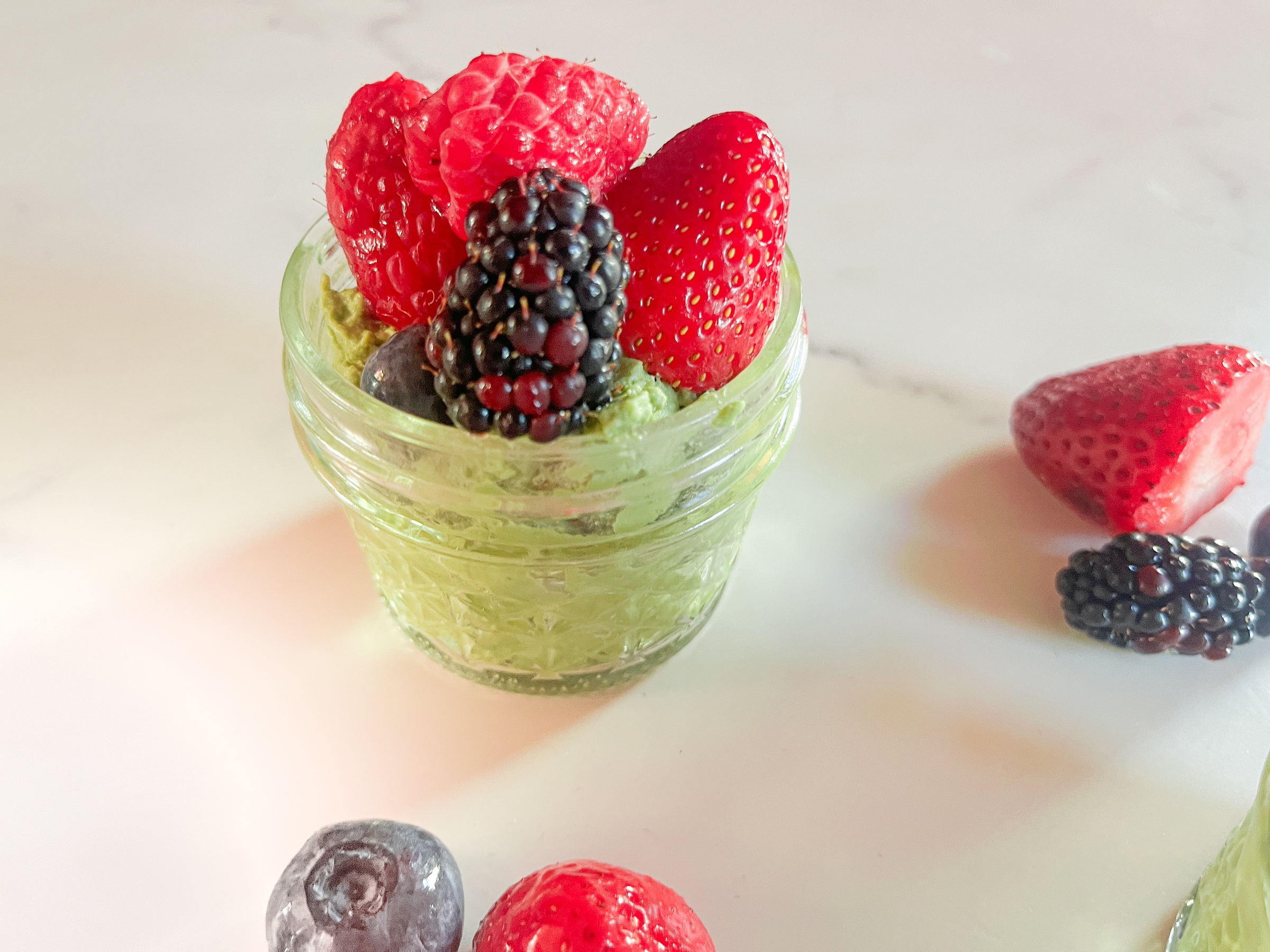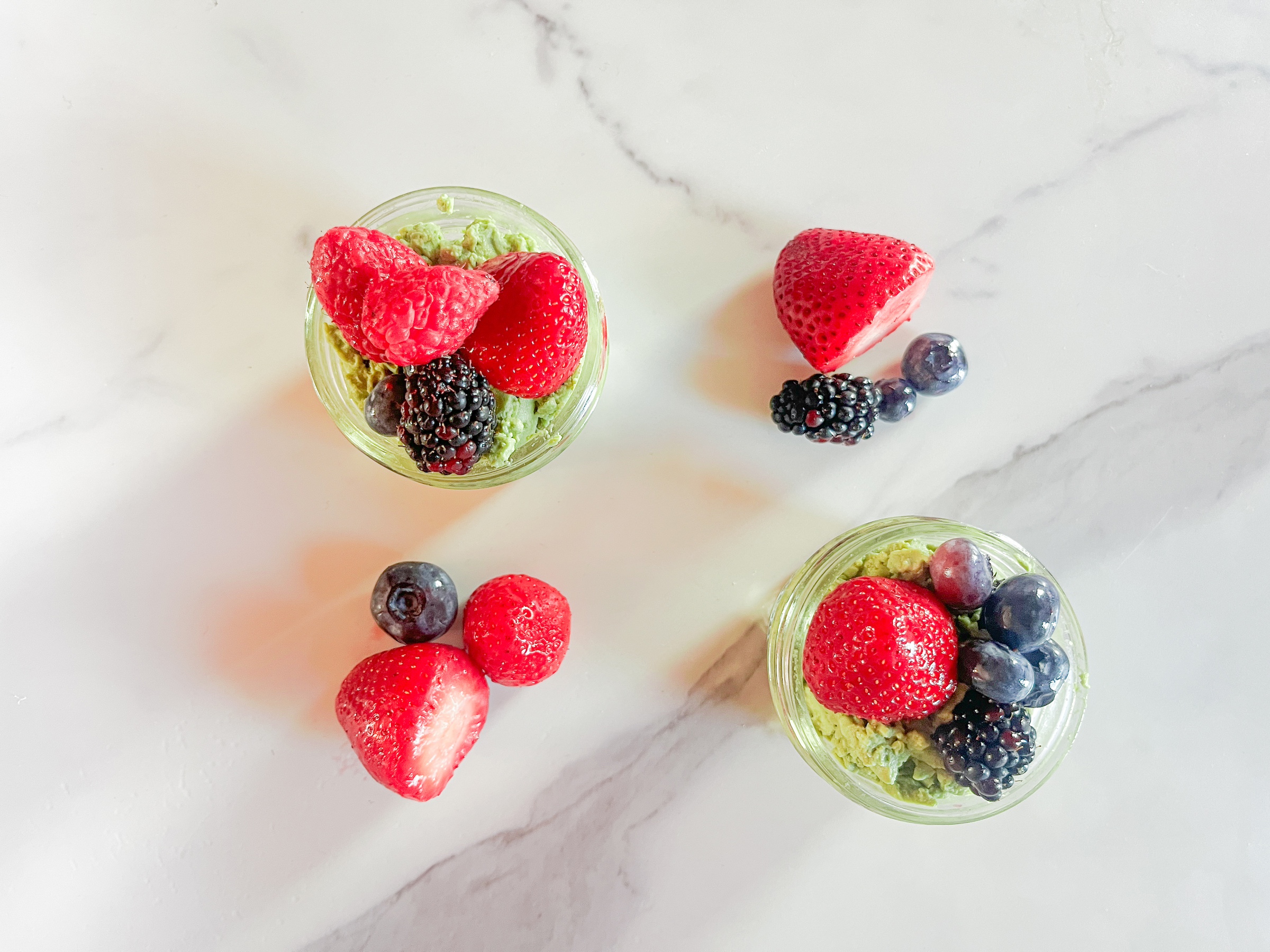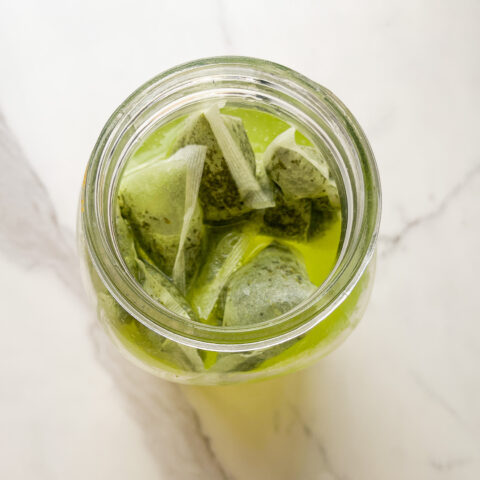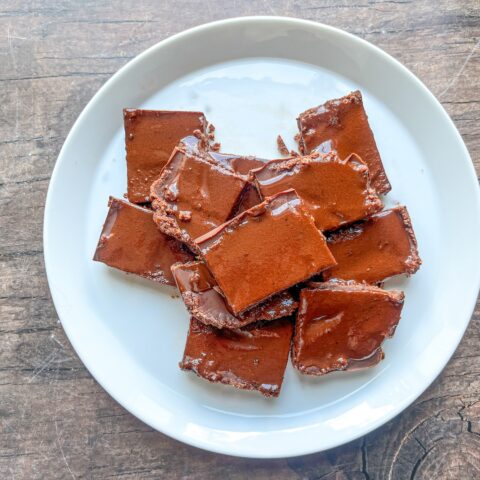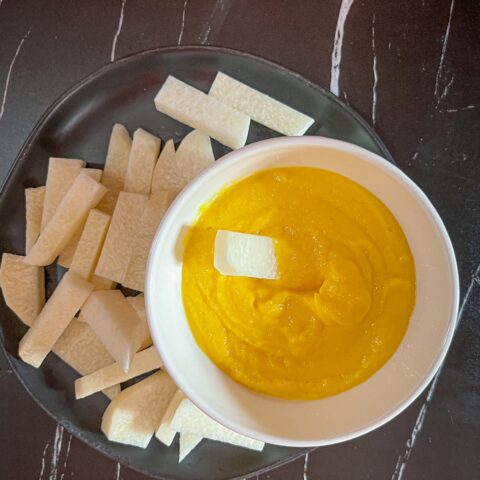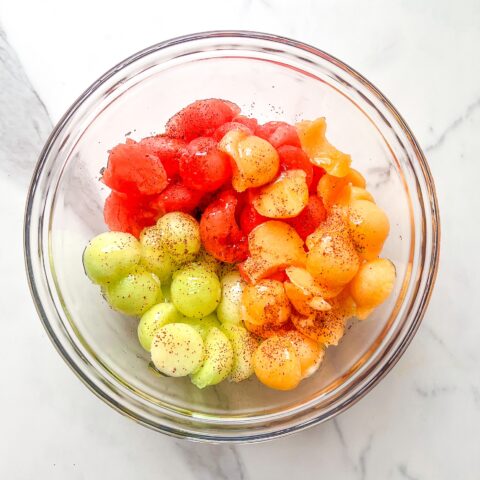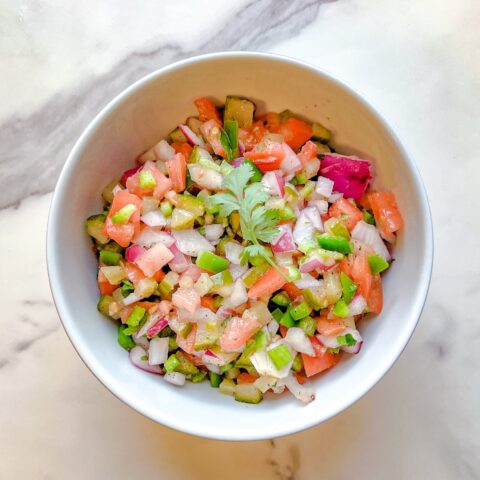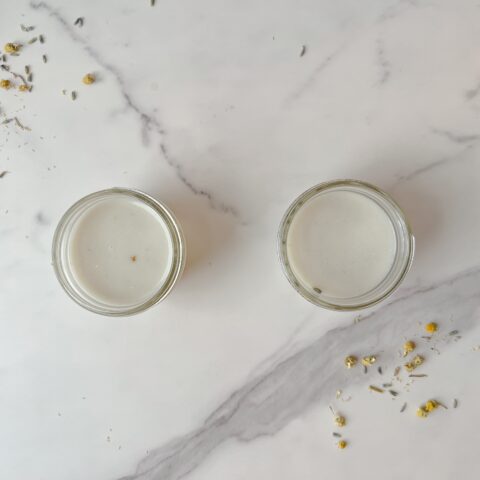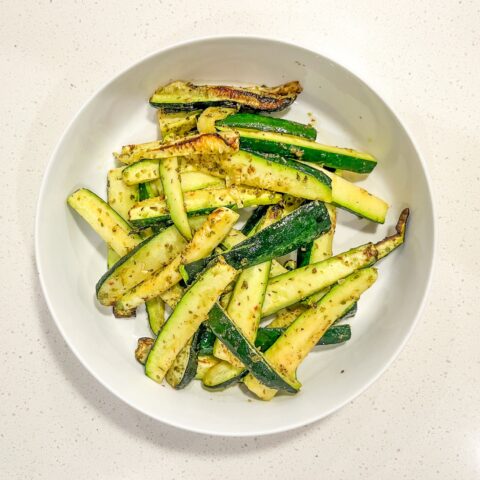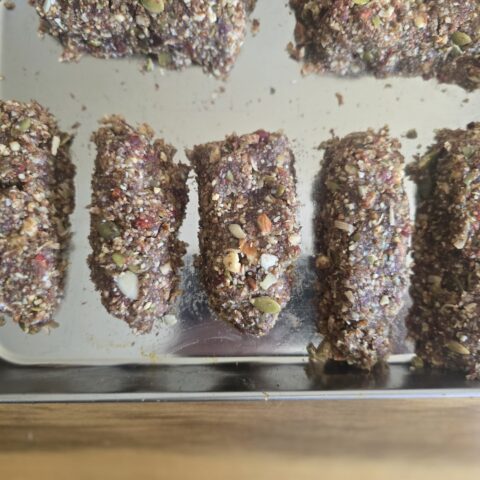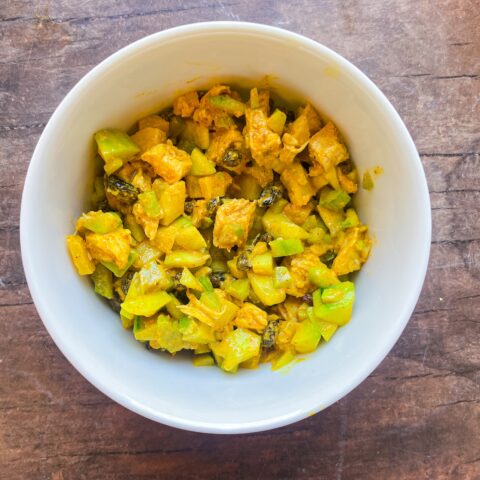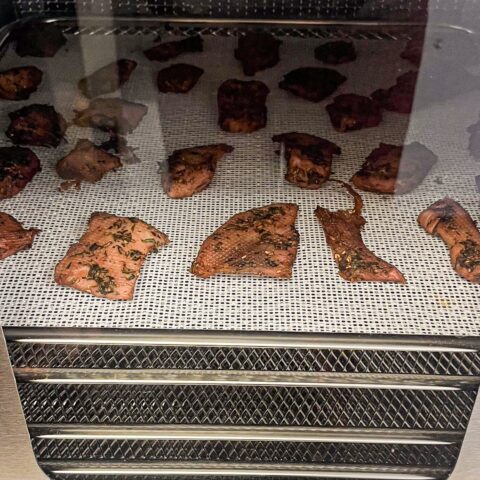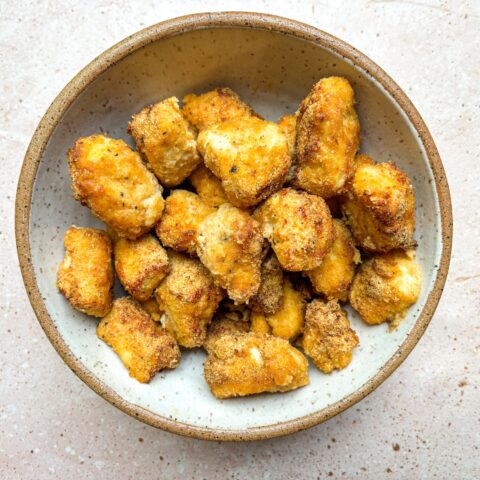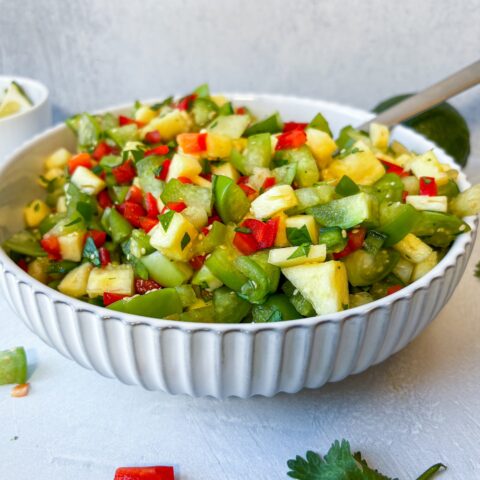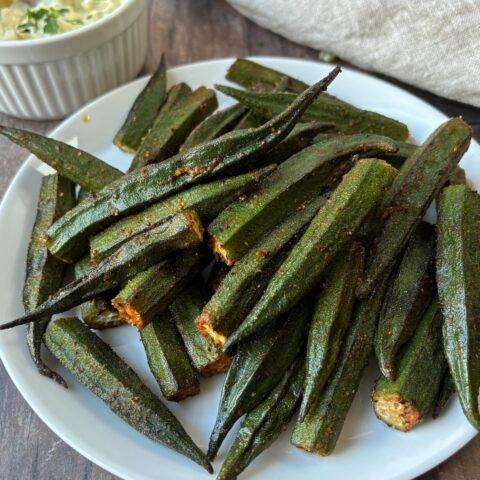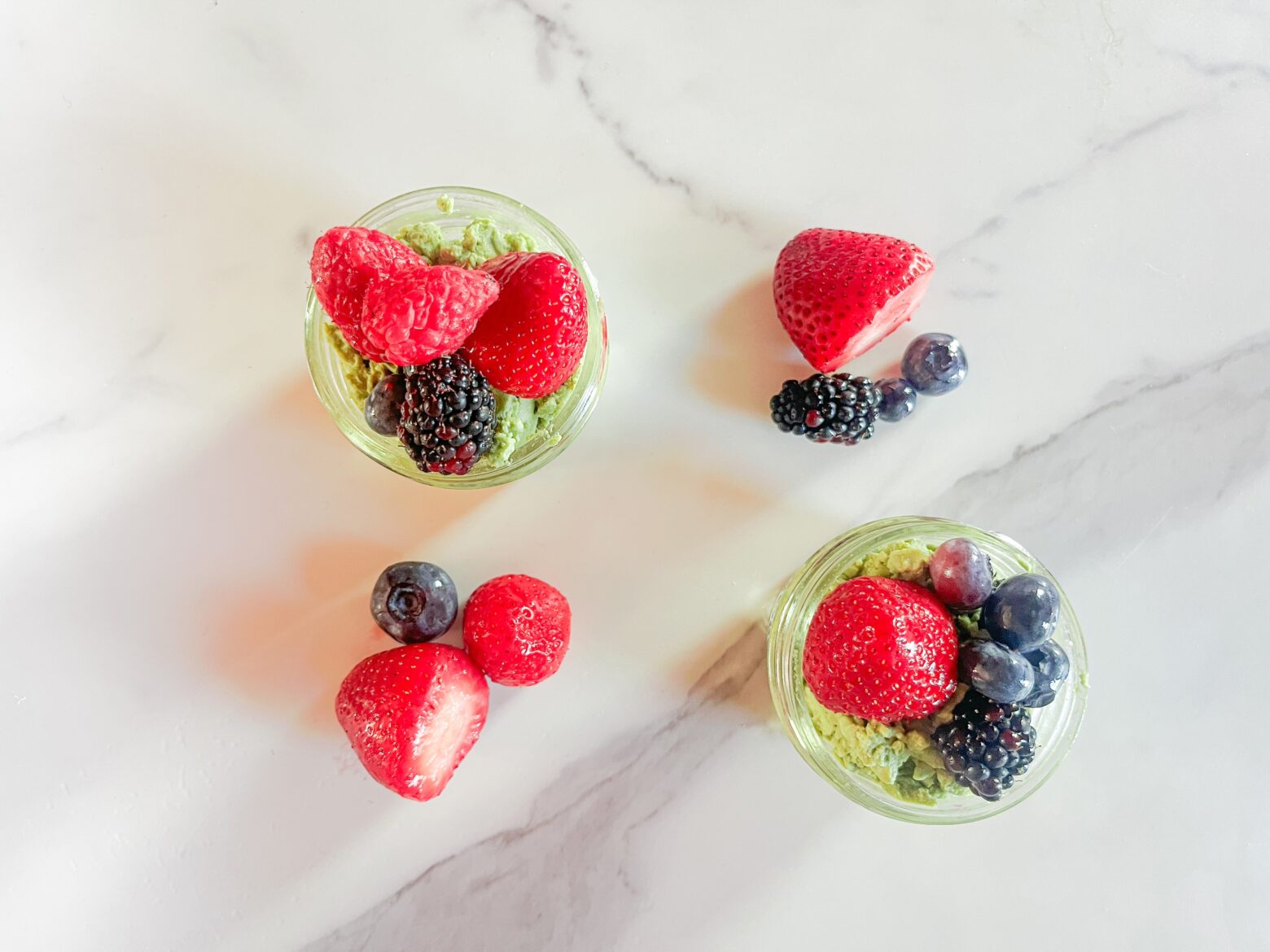

If you love matcha lattes, you’ll flip for this non-dairy, creamy matcha pudding. It’s a refreshing, subtly sweet treat that delivers a boost of healthy nutrients while being easy on the tummy. Dress it up with seasonal fresh fruit to really enhance the flavors. We used summer-seasonal berries, melon, and peaches.
A few tips for matcha pudding perfection: This recipe only works with cold full-fat coconut milk, so keep a can chilled in the fridge for when the mood strikes. Preferably, choose an organic brand without gums or preservatives. For matcha that blends like silk with no clumps or grit, use a high-grade powder (see below). Give the pudding at least 3 hours to set before serving. This recipe doubles beautifully and keeps well in the refrigerator for a healthy indulgence any time of day.
Matcha is a pretty green tea packed with nutrients. Because you consume the whole tea leaf that is stone-ground into a fine powder, matcha delivers more antioxidants than steeped green tea. It’s full of catechins like epigallocatechin gallate (EGCG), which help neutralize free radicals and support cell health.1 Matcha’s vibrant color, from its chlorophyll content, acts as a natural detoxifier.2
How to Select a High-Quality Matcha
Not all matcha is created equal, and the difference between a grassy, bitter cup and a smooth, velvety one comes down to quality. Here’s what to look for:
- Vivid, Bright Green Color: A dull, olive, or yellowish hue means it’s older, oxidized, or made from lower-quality leaves.
- The Right Grade: Look for “ceremonial grade” for drinking or desserts. “Culinary grade” is better suited for baking.
- Fine, Silky Texture: High quality matcha should feel like baby powder or cornstarch. Coarser grains may clump or taste gritty.
- Fresh, Sweet Aroma: Good matcha smells fresh, grassy, and slightly sweet, with no mustiness or seaweed-like scent. To retain its freshness, store powdered matcha in the refrigerator.
References:
- Capasso, L., Masi, L. D., Sirignano, C., Maresca, V., Basile, A., Nebbioso, A., Rigano, D., & Bontempo, P. (2025). Epigallocatechin Gallate (EGCG): Pharmacological Properties, Biological Activities and Therapeutic Potential. Molecules, 30(3), 654–654. https://pubmed.ncbi.nlm.nih.gov/39942757/
- Capasso, L., Masi, L. D., Sirignano, C., Maresca, V., Basile, A., Nebbioso, A., Rigano, D., & Bontempo, P. (2025). Epigallocatechin Gallate (EGCG): Pharmacological Properties, Biological Activities and Therapeutic Potential. Molecules, 30(3), 654–654. https://pubmed.ncbi.nlm.nih.gov/39942757/

Matcha Pudding with Strawberry, Peach, and Melon
- Recipe by: Kimberly Lord Stewart
- Serves: 4
- Meal: Dessert
- Serves: 4
- Prep Time: 3 hours 5 minutes
- Cook Time: 10 minutes
- Total Time: 3 hours 15 minutes
Ingredients
2 1/2 tsp matcha powder
1 can (13.5 oz.) full-fat, organic coconut milk
1 tbsp tablespoons honey or maple syrup
2 tsp gelatin powder
1/4 cups strawberries, finely diced
1/4 cups watermelon, cantaloupe, or honeydew melon; finely diced
1/4 cups peaches, finely diced
Directions
Place matcha in a medium bowl. Vigorously shake coconut milk and pour ¼ cup over the matcha. Whisk to combine, breaking up clumps of matcha and coconut fat. Some lumps may remain.
Sprinkle gelatin evenly over matcha mixture and stir. Set aside.
Heat remaining coconut milk with honey and vanilla in a saucepan until hot, but not boiling.
Remove from heat and add matcha gelatin mixture (you’ll reuse the bowl). Whisk by hand or blend with an emersion blender until everything is combined and there are no lumps.
Return pudding mix to medium bowl and refrigerate for 3 hours uncovered, or cover and let sit overnight.
To serve, whisk matcha pudding with an electric mixer until light and fluffy. Spoon into individual serving dishes and top with diced strawberries, melon, and peaches.
Related Recipe
